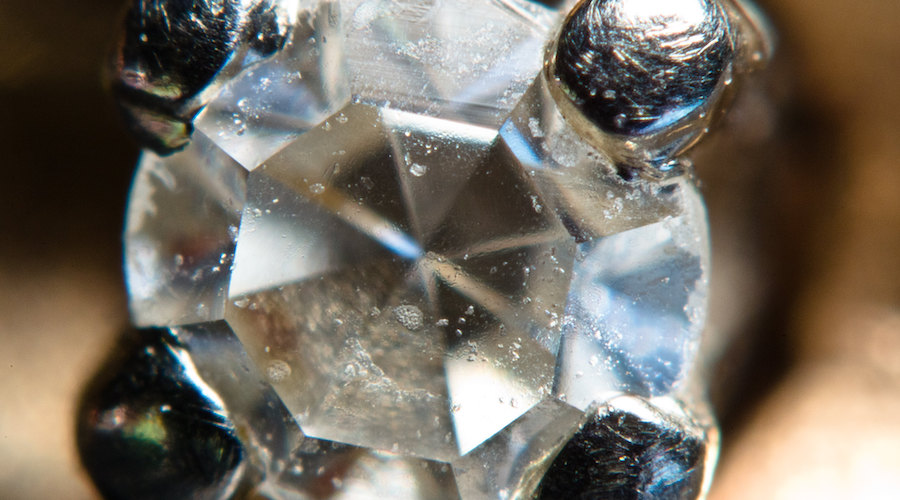Lab-grown ultra-uniform nanodiamonds now a reality
Post Date: 07 Apr 2022 Viewed: 281
Researchers at the University of North Texas have developed a method to grow ultra-uniform nanodiamonds without the need for explosives.
The tiny gems, only a few nanometers wide, are crucial for drug delivery, sensors and quantum computer processors. Thus, making them consistently sized is important to the success of these technologies.
“It’s fascinating that although a diamond is chemically rather simple — it is one element, carbon — making this material at the nanometer scale is extremely difficult,” Hao Yan, the project’s principal investigator, said in a media statement.
Carbon becomes a diamond when atoms of this element are arranged into a rigid 3D cubic pattern under high-pressure and high-temperature conditions. Researchers previously have created nanodiamonds in the lab by detonating explosives such as TNT in a sealed stainless-steel container.
The blast converts the carbon in the explosive material into tiny diamond particles. However, this crude method is hard to control and the crystals that form are uneven in size, requiring additional steps to sort them for different technologies.
To devise a more precise way to make nanodiamonds, Yan’s group looked into the chemistry that nature uses.
.jpg)
Scientists have developed a method to grow ultra-uniform nanodiamonds (scale bar is 5 nm) without using explosives. (Image by Tengteng Lyu, courtesy of the American Chemical Society).
“We realized that places, where diamonds are formed in the earth’s mantle, contain a lot of iron and iron-carbon compounds, including carbides and carbonates,” the scientist said. “And when iron carbide reacts with iron oxide between the crust and the upper mantle, diamonds grow.”
Armed with this knowledge, Tengteng Lyu, a graduate student in Yan’s lab, designed a chemical process to imitate the lithospheric environment found below the planet’s surface.
First, Lyu created evenly sized nanoparticles of iron carbide as the carbon source for the diamonds. The tiny particles were dotted throughout an iron oxide matrix, analogous to the iron carbide being chocolate chips within cookie dough.
Then, Lyu placed the carbon-precursor “dough” in a high-pressure and high-temperature environment, similar to the conditions at locations where natural diamonds form. The compounds reacted, and very uniform nanodiamonds resulted. The new method makes crystals as small as 2 nm wide with differences between them of less than a nanometer. Yan says that this is one order of magnitude better than anyone can do without additional post-synthetic treatment or purification steps.
Beyond perfection
According to Yan, creating uniform, perfect nanodiamonds is great but these materials can be even more useful when they have defects, such as empty spots in the diamond’s structure and the replacement of neighbouring carbon atoms with nitrogen, silicon, nickel or another element.
Because the non-carbon atoms colour the material slightly, they are called “colour centers.” Nanoparticles with only one colour center are highly desirable because they can securely store information in quantum computers and telecommunication devices.
Traditionally, a high-energy beam of atoms, such as nitrogen or silicon, is used to bombard the diamond and embed these elements in the crystal’s structure. However, this method cannot control how many colour centers are added to one diamond, requiring post-processing steps to get crystals with a single-atom defect. In addition, when the diameters of diamonds shrink to 2-3 nm — the size range that Yan’s team can now make consistently — this atom beam approach becomes energetically unfavourable.
But with their new method, Yan thinks they could design a way to replace one carbon of the thousands present in their carbon-precursor “dough.” He estimates that they could now make enough single-colour center nanodiamonds for a couple of thousand quantum computers with one synthesis experiment.
S ource:Mining




